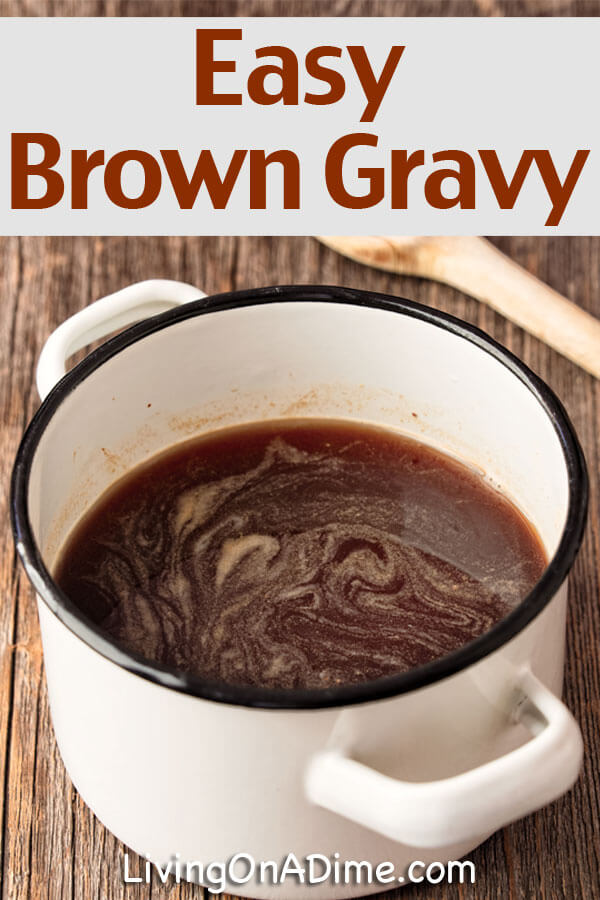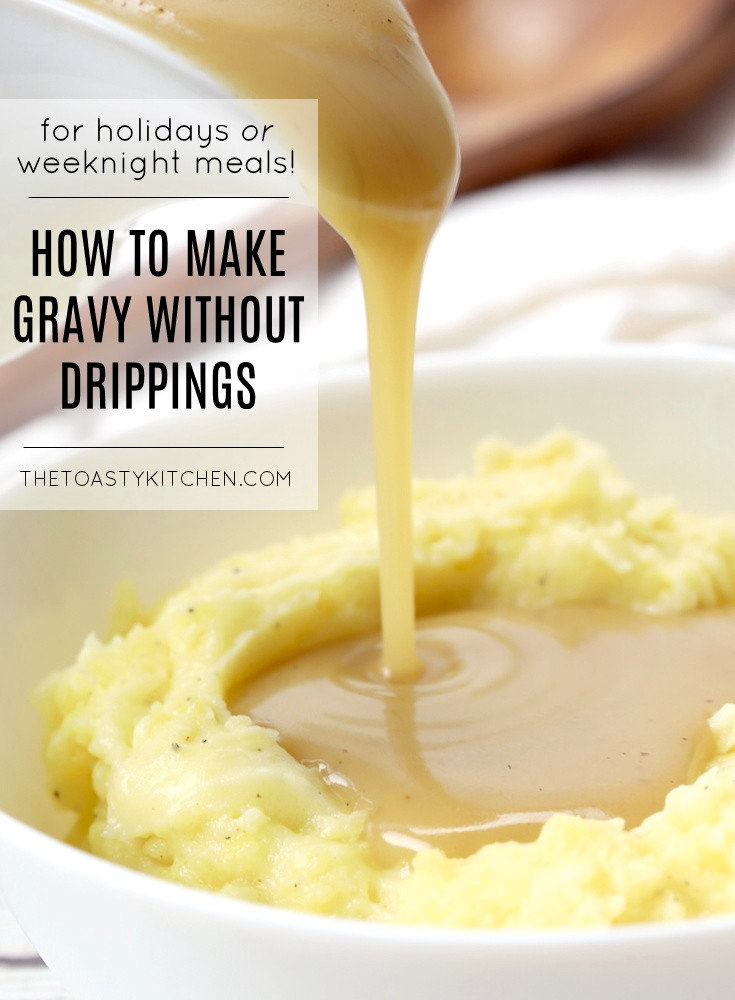
Here are the steps I follow for making the gravy gluten-free: Warm the broth in a skillet until a low simmer. It’s still extra easy to make, though. If you’re using good quality stock you can sometimes get away with it, but in my experience you need a few extra goodies in order to bring the gravy up to the standard of a meat drippings gravy.This thick, easy and flavourful lamb gravy, enriched with red wine and the juices from the roasting tray is the only gravy to serve with your roast lamb.See how easy it is to make pan gravy on your stovetop.Making Gluten-Free Gravy (Without Flour) For gluten-free gravy, we switch up the method a bit. At its absolute bare bones, you can create a gravy by simply making a roux using stock instead of milk. How to make Gravy from scratch without drippings.

When the roux smells toasty and turns beige, deglaze the pan by adding the juices from the roast in increments, whisking all the while to prevent the formation of lumps. Cook the roux over moderate heat, stirring constantly to avoid burning and to keep it from forming lumps. One way to make a roux is to leave a few tablespoons of fat (about 1 tablespoon per 2 servings) in the roasting pan and add an equal amount of flour. Other aromatics that you can add include are celery, carrot, and bell pepper.Peppercorns and onion way to make gravy without drippings an easy from scratch gravy that Saucier over medium-low heat large enough to brighten up the flavor.The typical approach for thickening gravy is to make a roux, which is a mixture of equal parts flour and fat, cooked for a minute or two until toasty.
And, if you don't want to use the fat you reserved (perhaps it's too greasy or there wasn't enough), you can use either of these approaches to make a roux using all or part butter—just stick to the same formula, using an equal amount of flour and fat, and cook the roux until beige and toasty before gradually whisking in the juices. It's important to combine the flour and fat alone before adding the liquid back in, because otherwise the flour and juice will combine to form a lumpy mess, which is definitely not what you want in gravy.You can also make a roux in a separate saucepan and then gradually whisk in the deglazed juices from the roast, along with additional stock or water if necessary. Note that in this case, you don't deglaze the pan until after you thicken.
Continue whisking until the gravy is thick. To make a beurre manie, combine equal parts butter and flour and use the back of a fork to work them into a smooth paste, then gradually whisk the paste, about 1 teaspoon as a time, into the already deglazed gravy base simmering on the stove. It can be made ahead and offers you more control over the thickness of your gravy, because you can add it slowly in increments. You won't use the fat you separated from your roast's juices (discard it or reserve it for another use), but the beurre manie approach is a little easier than making a roux.
The best approach for cream gravy is to prepare a jus and then add cream to it. For the most part, cream isn't used to make gravy for lamb, beef, or other red meats. If you add the slurry all at once and the jus is too thick, the only remedy is to dilute the jus, weakening its flavor.Cream can also be used to give body and thickness to gravy, and is especially good with white meats such as turkey or pork. Make sure the juices are at a boil, or you won't be able to judge the thickening power of the slurry. To use cornstarch or arrowroot, mix them with an equal amount of cold water and whisk this mixture (it's called a "slurry") slowly into the hot deglazed juices.
Too Thick or Too ThinGravy should have a smooth, unctuous consistency, but shouldn't be too thick. When thickening gravy, keep in mind that you can combine techniques by, for example, first thickening a little with roux and then finishing with puréed vegetables and/or with cream. Purée the vegetables with a little broth or water, whisk the purée into the gravy to thicken it, and then strain it before serving.Some cooks add butter to thicken or add body, while others may even whisk in a little beurre blanc (a classic French sauce made with wine, vinegar, shallots, and butter), but all this butter tends to make gravy very rich, so if you choose to add butter, use a light hand.
But to avoid the lumps in the first place, you'll have to be careful with any thickener you use. This is silly, since if the gravy is lumpy, you can just strain it. No More Lumpy Gravy!What about the lumps? Lumpy gravy inspires the worst nightmares of many a novice cook. Or, you can add more of your chosen thickener, gradually combining it with the gravy until you reach the desired thickness. If gravy is too thin, gently boil it down to thicken and reduce it.
An even better option is to roast the giblets with the bird, chop them finely, and add them to the gravy just before serving. Some cooks use the giblets to prepare a broth that is added to the pan juices. The trick is to add liquid at just the right rate—too slowly, and the flour will grip up into a thick, almost solid mass add them too quickly, and the flour will be lumpy.Many cooks are intimidated by using the giblets to make turkey or even chicken gravy, but it's really rather straightforward, and a terrific way to add flavor. As this happens, continue to add juices, a small amount at a time, whisking constantly so that you can work out the lumps.
Your job is to capture those juices and enhance them, but you don't need to go crazy adding additional ingredients—let the juices speak for themselves. Finishing Your GravyMaking gravy is about highlighting the juices from a roast. Remember: The worst that can happen is that you have to strain your gravy. But this all sounds much harder than it is. Also, thickeners other than flour, such as cornstarch and arrowroot, are less problematic and usually smooth out as you stir them.



 0 kommentar(er)
0 kommentar(er)
